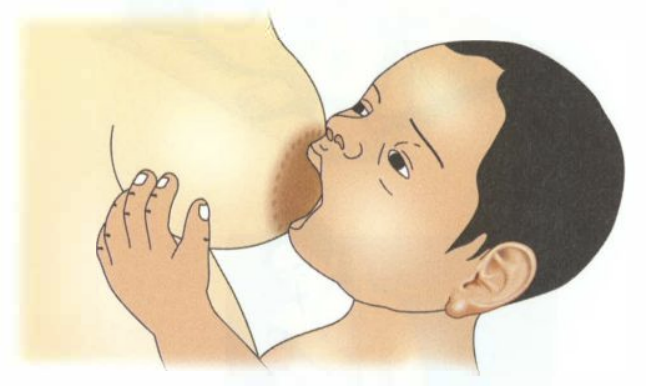
Breastfeeding is one of the most important and natural ways to nourish your baby. However, getting it right can be challenging, especially for new mothers. One of the most crucial factors that determine successful breastfeeding is the proper positioning and attachment of the baby. Let’s discuss the proper way to position and attach your baby to the breast for breastfeeding.
How to Position your baby while Breastfeeding?
Proper positioning of the baby is essential for comfortable and effective breastfeeding. When you hold your baby for feeding, make sure their whole body is supported, not just the neck or shoulders. The baby’s head and body should be in one line without any twists in the neck. By following these tips, you can prevent any discomfort or pain while feeding your baby.
You may find this helpful: Benefits of Breastfeeding for the Mother and the baby
How to attain Good Latching/ Attachment?
- Position your baby correctly for feeding.
- Initiate the rooting reflex by gently touching your baby’s cheek.
- Wait for your baby to open their mouth wide.
- Ensure that your baby’s mouth covers most of the areola, not just the nipple.
- This will prevent sore nipples and ensures your baby gets enough milk.

Signs of Poor Latching:
A poor latch can make breastfeeding uncomfortable and difficult for both the mother and the baby. Here are some signs of a poor latch:
- Painful nipples: If your nipples are sore, cracked, or bleeding after feeding, it could be a sign of a poor latch.
- Shallow latch: If the baby’s mouth is not open wide enough, they may only be sucking on the nipple, causing pain and discomfort.
- Clicking or smacking sounds: If you hear clicking or smacking sounds while your baby is nursing, it may indicate that they are not latched on properly.
- Inefficient feeding: If your baby is not gaining weight or seems hungry all the time, it could be a sign of poor latch and inefficient feeding.
- Fussiness or crying during feeding: If your baby is fussy or crying during feeding, it could be a sign that they are not getting enough milk due to a poor latch.
In conclusion, proper positioning and attachment are crucial for successful breastfeeding. Follow the tips in this post to ensure your baby’s comfort, adequate milk intake, and your own pain-free experience. Breastfeeding is a natural way to bond with your baby and can become a joyful experience with practice.